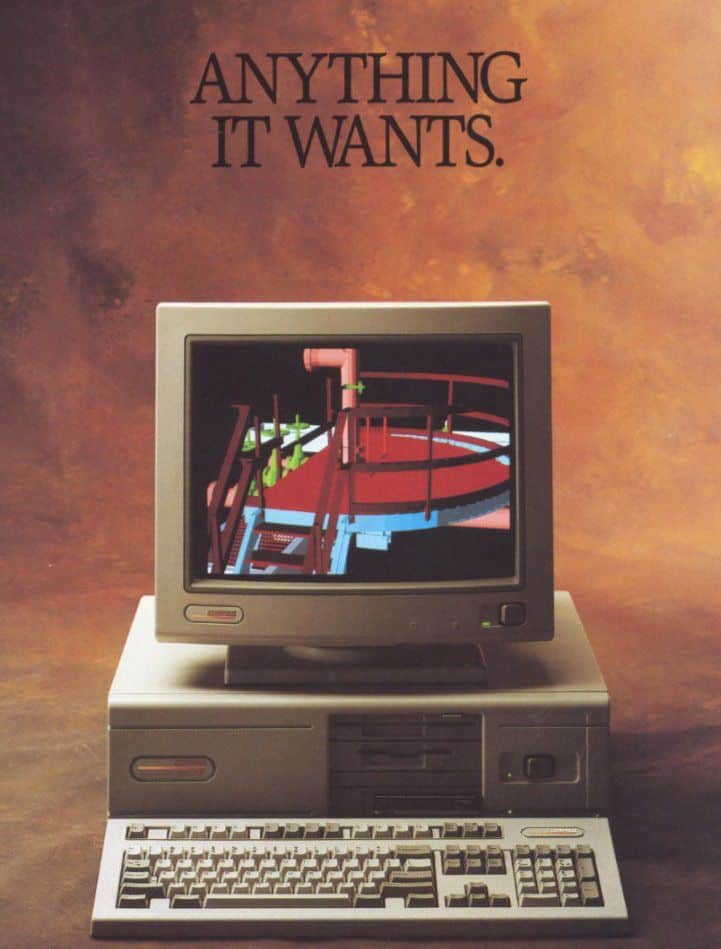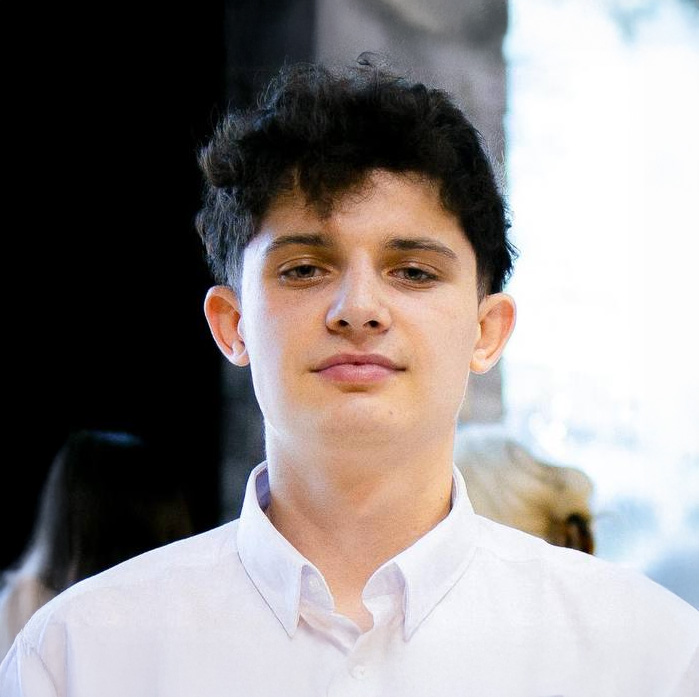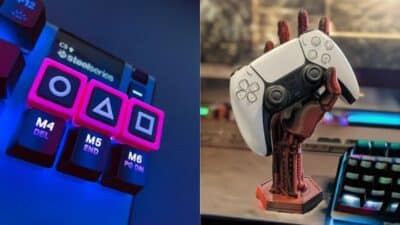As we step into 2025, the graphic design landscape continues to evolve with fresh approaches and innovative techniques. From AI-powered creations to nostalgic elements with modern twists, designers are pushing boundaries and redefining visual communication across digital and print media.
Staying current with emerging design trends gives you a competitive edge and ensures your visual content resonates with contemporary audiences. These trends reflect broader cultural shifts, technological advancements, and changing consumer preferences, offering valuable direction for your creative projects. Whether you’re a professional designer or simply interested in visual culture, understanding these movements will help you craft more impactful and relevant designs in the coming year.
1) AI-powered design elements
Artificial intelligence is revolutionizing graphic design in 2025, offering tools that blend human creativity with computational efficiency. You’ll notice AI-powered design becoming increasingly sophisticated, with algorithms that can generate unique visual assets based on simple text prompts.
Designers are now using AI to create custom illustrations, typography, and complex patterns that would have taken days to produce manually. These tools are particularly valuable for rapid prototyping and exploring multiple design directions simultaneously.
The most exciting development is how AI helps personalize visual content at scale. You can now generate thousands of variations of a design that adapts to individual user preferences or demographics while maintaining brand consistency.
AI design assistants are becoming standard in creative workflows, offering suggestions for color palettes, layouts, and even identifying potential accessibility issues. They analyze current trends and help you incorporate them appropriately.
What makes this trend particularly powerful is the collaboration between human designers and AI tools. You retain creative control while leveraging AI to handle repetitive tasks and enhance your creative process.


2) Bold Minimalism
Bold minimalism continues to dominate graphic design in 2025, proving that simplicity doesn’t mean playing it safe. This approach strips designs down to essential elements while making powerful visual statements.
You’ll notice oversized typography as a key component, with attention-grabbing fonts dominating compositions. These large text elements create immediate impact while maintaining clean aesthetics.
Vibrant accent colors are strategically incorporated into minimalist designs. Rather than overwhelming with color, you’ll see bold hues used sparingly to create focal points and visual interest.
White space remains crucial but is now used more deliberately and confidently. Designers are embracing negative space as an active design element rather than just background.
This trend represents minimalism with muscle—moving away from delicate Swiss-inspired layouts toward bolder expressions. You can implement this by focusing on a single strong design element while eliminating unnecessary decoration.
For effective bold minimalism, consider contrasting scale elements dramatically. Pair very large components with much smaller ones to create visual tension that draws the eye.


3) Metallic accents
Metallic accents are making a strong comeback in 2025, offering designers a versatile way to add sophistication and visual interest to their work. Gold, silver, copper, and bronze finishes are particularly popular across digital and print media.
You can incorporate metallic elements through foil stamping on business cards and event materials for an upscale tactile experience. For digital designs, metallic gradients and textures create depth and luxury that catch the viewer’s eye immediately.
These accents work exceptionally well against dark backgrounds, creating striking contrast that elevates the overall design. Consider using metallic finishes for logos, typography, or as subtle accents in icons to avoid overwhelming your composition.
The trend pairs beautifully with minimalist designs where metallic elements can serve as focal points. Apps and websites particularly benefit from metallic touches that convey a high-tech, premium feel.
For conferences and events, metallic signage creates a memorable impression while communicating quality and attention to detail. Even subtle metallic highlights can transform an ordinary design into something extraordinary.


4) Pixel art revival
Pixel art is making a significant comeback in 2025 as designers embrace its nostalgic appeal and distinctive aesthetic. This retro-digital style, characterized by its visible square pixels and limited color palettes, is appearing across branding materials, website designs, and social media content.
You’ll notice pixel art‘s resurgence being driven by both nostalgia for early gaming and digital experiences, plus appreciation for its clear visual communication. Adobe has highlighted pixels as one of their top 10 graphic design trends to watch this year, confirming its mainstream revival.
Modern pixel art incorporates contemporary twists while maintaining the classic blocky appearance that makes it instantly recognizable. Designers are creating sophisticated compositions that balance the intentional simplicity of pixel formats with complex messaging.
This trend works particularly well for brands wanting to convey playfulness, technological relevance, or appeal to audiences with fond memories of early digital aesthetics. The deliberate constraints of pixel art create a unique visual language that stands out in today’s oversaturated design landscape.
Try incorporating pixel elements into logos, illustrations, or as accent features in otherwise contemporary designs to tap into this trend effectively.


5) Geometric shapes
Geometric shapes continue to evolve as a dominant force in 2025’s design landscape. Brands are increasingly using these elements not just as decorative features but as powerful storytelling tools that convey complex messages through simple forms.
The trend has expanded beyond basic shapes to include irregular geometrical patterns that create visual interest. These unexpected arrangements break away from traditional layouts while maintaining visual harmony.
You’ll find designers using geometric shapes to establish hierarchy and guide viewers through content in intuitive ways. The clean lines and structured nature of geometric elements provide a sense of order in an otherwise chaotic visual environment.
Simple geometry in typography is also gaining traction, with fonts featuring distinctive angular or circular elements. These geometric typefaces pair exceptionally well with minimalist designs while still maintaining strong visual impact.
The versatility of geometric shapes allows for application across various media, from print to digital interfaces. Whether used as subtle background elements or as the primary visual focus, geometric forms provide a timeless quality while feeling distinctly modern.


6) Textured grain effects
Textured grain effects are gaining significant traction in graphic design for 2025. This design element adds depth and a tactile quality to otherwise flat digital visuals, creating more engaging user experiences.
Designers are increasingly using grain effects to evoke nostalgia while adding richness to modern designs. You’ll notice these textures transforming 2D compositions into more complex visual experiences that feel organic and handcrafted.
The trend extends beyond simple backgrounds to include grain overlays on typography and imagery. This technique helps your designs stand out in an increasingly digital world by introducing a subtle analog feel.
Film grain aesthetics in particular are popular, mimicking the texture of traditional photography. You can apply these effects with varying intensities depending on whether you want a subtle texture or a more pronounced vintage look.
When implementing textured grains in your work, consider how they complement your overall design rather than dominate it. The key is finding balance—enough texture to add interest but not so much that it impairs readability or distracts from your message.


7) Mismatched and bright palettes
Mismatched and bright color schemes are taking center stage in 2025 graphic design trends. Designers are boldly combining colors that traditionally “shouldn’t” work together to create visually striking compositions. These unconventional pairings often feature high saturation levels, including neon hues that demand attention.
You’ll notice this trend incorporates vibrant, contrasting colors alongside playful mismatched fonts. This approach creates dynamic visual tension that can make your designs more memorable and engaging. The intentional clash of colors creates energy that draws viewers in.
The key to success with this trend is maintaining balance despite the apparent discord. While the colors and fonts may seem randomly selected, successful designs maintain an underlying harmony through thoughtful composition.
Consider incorporating this trend when you want your design to stand out from competitors. It works particularly well for brands targeting younger audiences or those looking to position themselves as innovative and daring.
When experimenting with mismatched and bright palettes, start with two contrasting colors and gradually add more as you become comfortable with the approach. Remember that even in chaos, there should be purpose behind your design choices.


8) Nostalgic networks
Nostalgic Networks combines retro design elements with contemporary aesthetics to create a sense of digital nostalgia. Designers are increasingly incorporating pixelated fonts, 8-bit graphics, and early internet aesthetics into modern design work.
This trend reflects a growing appreciation for the visual language of early digital interfaces from the 1990s and early 2000s. You’ll notice web designs featuring intentionally “low-tech” elements that evoke the feeling of early websites and computer interfaces.
For subtle implementation, try using pixelated fonts in email campaigns or adding pixel art accents to your marketing materials. More bold applications include full website designs that mirror early internet aesthetics while maintaining modern functionality.
This trend offers a perfect balance between innovation and familiarity. It creates an emotional connection with audiences who experienced the early days of digital design while feeling fresh to younger audiences discovering these aesthetics for the first time.
Consider incorporating glitch effects, early computer icons, or other retro digital elements to tap into this growing trend. The key is finding thoughtful ways to reference digital history while creating something that feels contemporary and relevant.


Exploring the Evolution of Graphic Design
Graphic design continues to transform in response to technological innovations, cultural shifts, and environmental concerns. The trajectory from traditional methods to digital platforms has reshaped how designers approach their craft and what audiences expect from visual communication.
Impact of Technology on Design
AI-powered design tools are revolutionizing the creative process in 2025. These technologies now assist designers in generating concepts, automating repetitive tasks, and personalizing designs at scale.
You’ll notice that data-driven design has become essential, allowing for more targeted and effective visual communications. Analytics now inform design decisions from the initial concept phase.
Augmented reality integration has moved beyond novelty to become a standard consideration in design workflows. Brands increasingly expect designs that can transition seamlessly between physical and digital realms.
Digital accessibility has become non-negotiable, with designers employing AI tools to ensure their work meets WCAG guidelines. This technological shift has democratized design, making professional-quality tools available to creators at all levels.
Sustainability in Design Practices
Eco-conscious design has emerged as a dominant trend in 2025. You can see this reflected in the rise of digital-first approaches that reduce material waste while maintaining visual impact.
Designers are increasingly selecting sustainable typefaces and visual elements that require less processing power and energy to render. This “digital minimalism” serves both aesthetic and environmental purposes.
Renewable design systems focus on creating visual frameworks that can be updated rather than discarded. These modular approaches extend the lifespan of branding and marketing materials.
Color palettes inspired by nature not only connect with sustainability messaging but often require less ink when printed. Many designers now include carbon footprint considerations in their project briefs alongside traditional requirements.
Innovative Techniques in 2025
Designers are embracing groundbreaking technologies that fundamentally transform creative workflows and visual experiences. These innovations are pushing boundaries beyond traditional design methods, opening new possibilities for audience engagement.
Utilization of Augmented Reality
AR integration is revolutionizing graphic design by creating immersive, interactive experiences that blur physical and digital boundaries. Designers are developing AR-activated packaging that reveals additional product information and animated visuals when scanned with smartphones.
Brand identities now extend into dimensional spaces through AR-enhanced logos that transform into 3D experiences. This creates memorable brand interactions that were previously impossible.
Publication designs incorporate AR elements that bring static pages to life with motion graphics and additional content layers. You’ll see magazines where images expand into videos or interactive infographics.
AR design tools are becoming more accessible, with intuitive interfaces allowing designers to create spatial experiences without extensive coding knowledge. This democratization is bringing AR capabilities to smaller design studios and independent creators.
Incorporation of AI-Generated Elements
AI collaboration tools are transforming creative workflows, with designers using machine learning algorithms as creative partners rather than replacements. You can now generate multiple design variations instantly and refine them to match your vision.
Style transfer technologies allow for seamless blending of different visual aesthetics, creating unique hybrid designs. This enables the fusion of seemingly contradictory styles like minimalism and maximalism into cohesive compositions.
AI-powered color palette generation tools analyze visual trends and psychological responses to create emotionally resonant color combinations. These tools help you develop color schemes that evoke specific moods and responses from your audience.
Personalization at scale has become feasible through AI systems that adapt designs to individual user preferences and behaviors. This allows brands to create tailored visual experiences without the traditional resource limitations of custom design work.
- 1.1Kshares
- Facebook0
- Pinterest1.1K
- Twitter0



